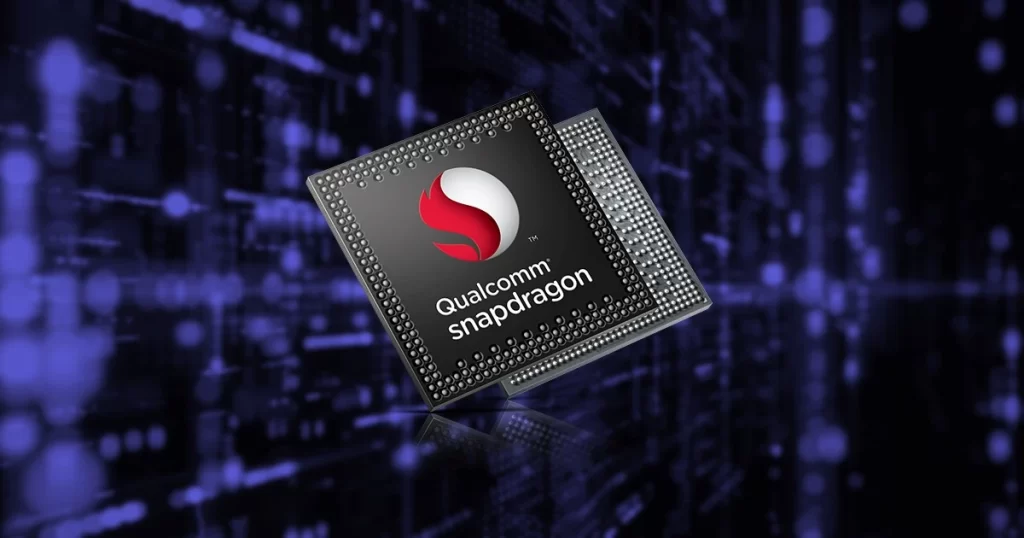The advent of 5G technology represents a revolutionary leap in wireless communication, enabling faster data speeds, lower latency, and greater connectivity across a range of industries. At the forefront of this evolution is Qualcomm, a global leader in the design, development, and commercialization of advanced wireless technologies, particularly in 5G chipsets. Qualcomm’s dominance in the 5G chipset market is not only a testament to its technical innovation but also to its strategic vision in driving next-generation communication standards.
This case study explores Qualcomm’s leadership in the 5G chipset space, examining its key innovations, competitive advantages, and strategies that have enabled the company to stay ahead in a fiercely competitive industry.
Qualcomm’s Role in the 5G Revolution
Qualcomm’s Early Investment in 5G Chipsets
Qualcomm’s leadership in 5G did not emerge overnight. The company’s dominance in 5G chipsets is a result of years of investment in research and development (R&D) and a strong focus on pushing the boundaries of wireless technology. As early as 2016, Qualcomm began working on technologies that would shape the 5G landscape. The company’s vision encompassed not only faster mobile internet speeds but also enhanced connectivity for IoT devices, smart cities, and autonomous vehicles. This long-term vision positioned Qualcomm as a pioneer, while many competitors were still developing strategies for 4G LTE markets.
Snapdragon 5G Chipsets: Qualcomm’s Flagship Products
The Qualcomm Snapdragon 5G chipset family is central to the company’s leadership in this space. Qualcomm was the first to launch a 5G modem, the Snapdragon X50, in 2017, laying the groundwork for 5G integration in smartphones and other devices. Over the next few years, Qualcomm consistently released advanced chipsets that powered flagship smartphones, including those by Apple, Samsung, and Xiaomi.
Key milestones include:
- Snapdragon X55 (2019): A second-generation 5G modem supporting both standalone (SA) and non-standalone (NSA) modes, ensuring better connectivity across various network infrastructures.
- Snapdragon X60 (2020): Qualcomm’s third-generation 5G modem-RF system, designed for faster global 5G deployment.
- Snapdragon 8 Gen 1 (2021): A top-tier chipset that combined cutting-edge processing power with enhanced 5G connectivity, catering to premium smartphones.
These products demonstrate Qualcomm’s ability to innovate continuously while addressing diverse market needs. The Snapdragon series has powered the 5G networks of leading global carriers, enhancing user experiences with faster downloads, seamless streaming, and improved cloud gaming capabilities.
Innovations in mmWave and Sub-6 GHz Technologies
One of Qualcomm’s most significant contributions to 5G technology is its leadership in mmWave (millimeter wave) and Sub-6 GHz spectrum technologies. Qualcomm’s chipsets support both frequency bands, ensuring that its 5G solutions are adaptable across various regions and use cases.
- mmWave: mmWave enables extremely fast data rates but operates at a shorter range. Qualcomm was instrumental in enabling mmWave in mobile devices, despite initial skepticism about its viability for consumer use. By collaborating with carriers and device manufacturers, Qualcomm brought mmWave to smartphones, paving the way for ultra-fast wireless connections in densely populated urban areas and stadiums.
- Sub-6 GHz: Qualcomm also excelled in Sub-6 GHz 5G, which provides more extensive coverage and is essential for rural and suburban deployments. The company’s ability to support both mmWave and Sub-6 GHz technologies has allowed it to cater to a broad range of markets and applications, making it a preferred partner for carriers worldwide.
Qualcomm’s Competitive Advantage
Strong R&D Capabilities and Intellectual Property Portfolio
One of Qualcomm’s key strengths lies in its extensive R&D investments and intellectual property (IP) portfolio. As of 2022, Qualcomm had invested over $67 billion in R&D, a large portion of which is dedicated to advancing wireless technologies. The company holds thousands of patents related to 5G, giving it a significant competitive edge in licensing agreements and partnerships.
Qualcomm’s patent portfolio extends across various aspects of 5G technology, from hardware (chipsets, antennas) to software (signal processing algorithms), ensuring it remains a critical player in the global 5G ecosystem. These patents also form the backbone of Qualcomm’s lucrative licensing business, which contributes to the company’s profitability.
Strategic Partnerships and Alliances
Qualcomm’s success in 5G chipsets is further reinforced by its strategic partnerships with network carriers, device manufacturers, and other stakeholders in the telecommunications ecosystem. By working closely with mobile network operators like Verizon, AT&T, and China Mobile, Qualcomm has ensured its chipsets are compatible with 5G deployments worldwide.
The company has also maintained strong relationships with smartphone OEMs, including Samsung, OnePlus, Oppo, and Xiaomi, making Snapdragon chipsets a preferred choice for flagship devices. In addition to smartphones, Qualcomm is expanding its 5G chipsets into other segments such as automotive, industrial IoT, and wearables.
Challenges and Competition
The chart titled “5G Chipset Market Share (2019-2023)” illustrates the competitive landscape of the global 5G chipset market, focusing on Qualcomm and its key competitors: MediaTek, Samsung LSI, and Huawei HiSilicon. Over the five-year period, Qualcomm’s market share exhibits a gradual decline, from 56% in 2019 to 45% in 2023. Despite this decrease, Qualcomm remains the dominant player in the 5G chipset industry. Meanwhile, MediaTek emerges as a significant challenger, increasing its market share from 17% in 2019 to 30% in 2023, largely driven by its affordable 5G solutions for mid-tier devices. Samsung LSI maintains a steady but smaller share, while Huawei HiSilicon experiences a notable decline due to geopolitical tensions and supply chain constraints. The data reflects Qualcomm’s continued leadership, though with growing competition from MediaTek and Samsung.
Despite its leadership, Qualcomm faces stiff competition in the 5G chipset market. Companies like MediaTek, Samsung LSI, and Huawei’s HiSilicon have made significant strides in developing 5G chipsets, challenging Qualcomm’s dominance. MediaTek’s Dimensity series, for example, has gained traction in mid-tier smartphones, offering competitive 5G solutions at lower costs.
Furthermore, geopolitical tensions and supply chain disruptions, such as the U.S.-China trade war and the global semiconductor shortage, pose potential risks to Qualcomm’s supply chain and business operations.
However, Qualcomm’s leadership in premium segments and its diversified 5G applications beyond smartphones (e.g., automotive, IoT) help mitigate these risks.
Qualcomm’s Growth Amidst the 5G Expansion
Qualcomm’s leadership in the 5G chipset market has not only reinforced its technological supremacy but also significantly impacted its financial growth and market position. As the demand for 5G-enabled devices surged globally, Qualcomm experienced robust revenue growth, driven by increased sales of its 5G chipsets and technology licensing. The following dataset showcases Qualcomm’s annual revenue and net profit from 2019 to 2023, reflecting the company’s financial growth during the 5G expansion.
The data reveals a consistent upward trend in both revenue and net profit over the five-year period. Qualcomm’s annual revenue grew from $24.27 billion in 2019 to $42.30 billion in 2023, representing a compound annual growth rate (CAGR) of approximately 14%. This growth can be attributed to the company’s strategic positioning as a key supplier of 5G chipsets for a broad range of devices and markets, including smartphones, automotive, and IoT. Additionally, Qualcomm’s net profit more than doubled from $4.39 billion in 2019 to $10.58 billion in 2023, indicating effective cost management and high profitability of its 5G technology licensing business. The impressive financial performance underscores Qualcomm’s successful execution of its 5G strategy, capitalizing on the growing global demand for next-generation connectivity solutions.
Future Prospects for Qualcomm in 5G Chipsets
Looking ahead, Qualcomm’s future in 5G appears bright, with several growth opportunities on the horizon:
- 5G in Automotive: Qualcomm has positioned itself as a key player in the future of connected cars. Its Snapdragon Digital Chassis is designed to power autonomous vehicles, leveraging 5G connectivity for vehicle-to-everything (V2X) communication.
- 6G Research: Qualcomm is already investing in the research and development of 6G technologies, aiming to lead the next generation of wireless communication. By anticipating future trends and technologies, Qualcomm intends to stay ahead of competitors in the long term.
- AI Integration: Qualcomm is increasingly integrating artificial intelligence (AI) capabilities with its 5G chipsets. This allows for smarter devices, faster processing, and enhanced user experiences across various industries, from healthcare to entertainment.
Conclusion
Qualcomm’s leadership in 5G chipsets and technologies is a testament to its long-term vision, innovative R&D capabilities, and strategic partnerships. The company’s commitment to pushing the boundaries of wireless communication has enabled it to stay ahead of competitors and solidify its position as a key player in the global 5G ecosystem.
As 5G continues to evolve and expand into new industries, Qualcomm is well-positioned to lead the charge in this new era of connectivity. With its focus on continuous innovation, strong IP portfolio, and strategic partnerships, Qualcomm is poised to shape the future of 5G and beyond.
Key Takeaways
- Qualcomm’s Leadership in 5G: Qualcomm has established itself as a global leader in 5G chipsets through continuous innovation, early investment in 5G technologies, and a strong focus on both mmWave and Sub-6 GHz spectrum solutions.
- Significant Financial Growth: The company’s financial performance saw substantial growth from 2019 to 2023, with annual revenue increasing from $24.27 billion to $42.30 billion, and net profit more than doubling from $4.39 billion to $10.58 billion.
- Strategic Partnerships: Qualcomm’s strategic alliances with major smartphone manufacturers, network operators, and automotive companies have solidified its position across diverse market segments.
- Challenges and Opportunities: Despite increasing competition from MediaTek and Samsung, Qualcomm’s focus on expanding 5G applications beyond smartphones into areas like automotive and IoT positions it well for sustained future growth.




